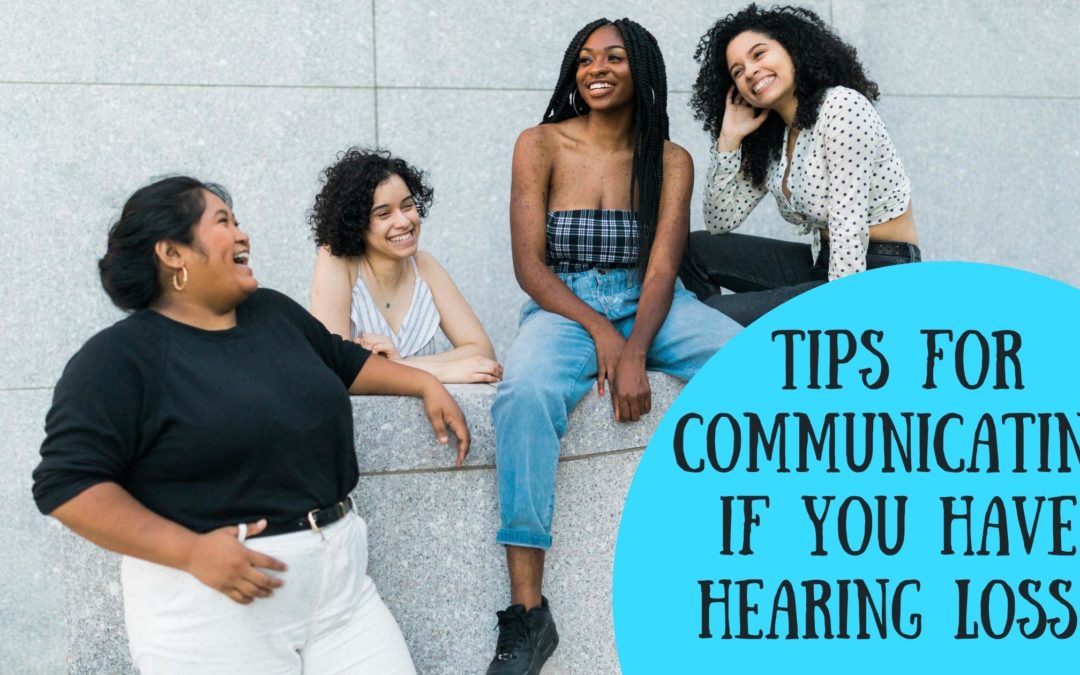Hearing loss can make it challenging to smoothly navigate conversations. Symptoms commonly experienced with hearing loss can strain communication. It is important to address and treat hearing loss which transforms hearing health. Hearing aids, the most common treatment option, maximize hearing capacity which better supports people to engage in effective conversation. So regularly wearing your hearing aids is a critical and necessary way to optimize your hearing and communication abilities. In addition to wearing hearing aids, you can integrate the following tips:
- Face the speaker. Maintaining full visibility of the person(s) you are speaking with is a great way to help you follow the conversation. Facing the speaker allows you to access important nonverbal cues like facial expressions and gestures which helps provide context to what is being communicated. Also, being able to see a person’s face allows you to read their lips, a common strategy people with hearing loss use to help distinguish words. A useful way to ensure that you are making eye contact and can see who you are talking to is to say the person’s name before speaking or ask them to say your name before initiating a conversation. This allows everyone to be better prepared for a conversation and gives time to make any necessary adjustments.
- Reduce background noise. One of the most common barriers to effective communication for people with hearing loss is background noise. Background noise provides an additional sound that the brain has to process. This not only requires more work and energy, but it also reduces the capacity to hear and participate in a conversation. Avoid noisy settings, places during peak hours (restaurants, bars), choose optimal seating if in a public space, etc. Other ways you can reduce background noise include: turning down any music or other audio in the background, powering off any household appliances that are distracting, driving with the windows rolled up to minimize environmental noise, etc.
- Avoid multitasking. In addition to background noise, multitasking is another source of distraction. Multitasking not only can create more sound for the brain to process but also prevents people from being fully present during the conversation. It is important for people to be able to focus and engage because it can be more challenging to readily hear and process speech. If you can, avoid engaging in activities simultaneously: texting, cooking, cleaning, driving, etc. You want to be as available for the conversation as possible.
- Rephrase vs. repeat. It is common to ask people to repeat something they’ve said if you have missed it. It is often more useful to ask the person to rephrase (rather than repeat) what they are trying to communicate. Everyone’s hearing loss is unique and people can have more difficulty with specific sounds and pitches. So repeating using the exact same words isn’t always the most helpful way to better hear or process what is being said. Rephrasing provides a greater opportunity to better hear and understand speech.
- Share effective strategies. Advocating for your hearing needs is critical. A great way to do this is by sharing communication strategies that work for you and your hearing needs. You likely know ways to enhance your hearing, making conversations more accessible and comfortable for you to engage in. It is important to remember that others want to be able to engage with you and have you understand what they are saying. Conversations are a two-way exchange so effective communication is a shared responsibility. By sharing effective strategies, you are inviting others to help create more accessible spaces and conversations.
Communication Tips for Video Calls
As video calls have become increasingly common, there are tips you can implement to help maximize your communication with these various technologies. This includes:
- Be sure that you are in a well-lit space and ask others to be so that everyone is fully visible.
- Ask that people speak one person at a time to minimize confusion.
- Mute the microphone when you aren’t speaking to reduce background noise.
- Apply closed captions so you are able to read the live transcription as people are talking.
- Use the chat function to ask any clarifying questions.
Integrating these tips can help you navigate communication with greater ease! If you have experienced changes in your hearing, we’re here to help. Contact us today to schedule an appointment for a hearing test.


